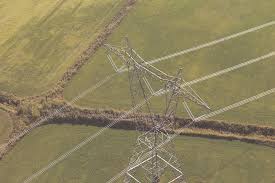Construction has begun on the US$1 billion electricity transmission corridor, the New England Clean Energy Connect, that has been planned to cross a forest in western Maine. Construction workers installed the first of 829 steel poles on a widened portion of the existing corridor that is part of the project near The Forks, as the groundwork is laid for the 230-kilometer corridor. Though the 1st U.S. Circuit Court of Appeals delayed the construction of a new 85-kilometer section, the construction is still moving full steam ahead on other sections. In western Maine, workers already have staged heavy equipment that will be used to prevent the equipment from damaging the ground. About 275 Maine workers already have been hired, and more would be hired if not for the litigation, officials said.
Also Read: New York Governor announces US$26 Billion Green Energy Initiative
The Maine electricity corridor line would provide a conduit for up to 1,200 MW of Canadian hydropower, reducing greenhouse emissions and stabilizing energy costs in New England. The project, which would be fully funded by Massachusetts taxpayers to meet the state’s clean energy goals, calls for the construction of a high-voltage power line from Mount Beattie Township on the Canadian border to the regional power grid in Lewiston, Maine. Critics have been trying to put the project to a halt saying it would destroy wilderness in western Maine. They have also that the environmental benefits of the project have been overstated.
Thorn Dickinson, CEO of the New England Clean Energy Connect, said “This project has always promised to provide an economic boost to Maine’s economy, and we are already seeing those benefits take shape.” The project has received permits from the Army Corps, Maine Department of Environmental Protection, Maine Land Use Planning Commission, and Maine Public Utilities Commission. The final approval came in the form of a presidential permit issued last month from the U.S. Department of Energy, providing a green light for the interconnect at the Canadian border.
